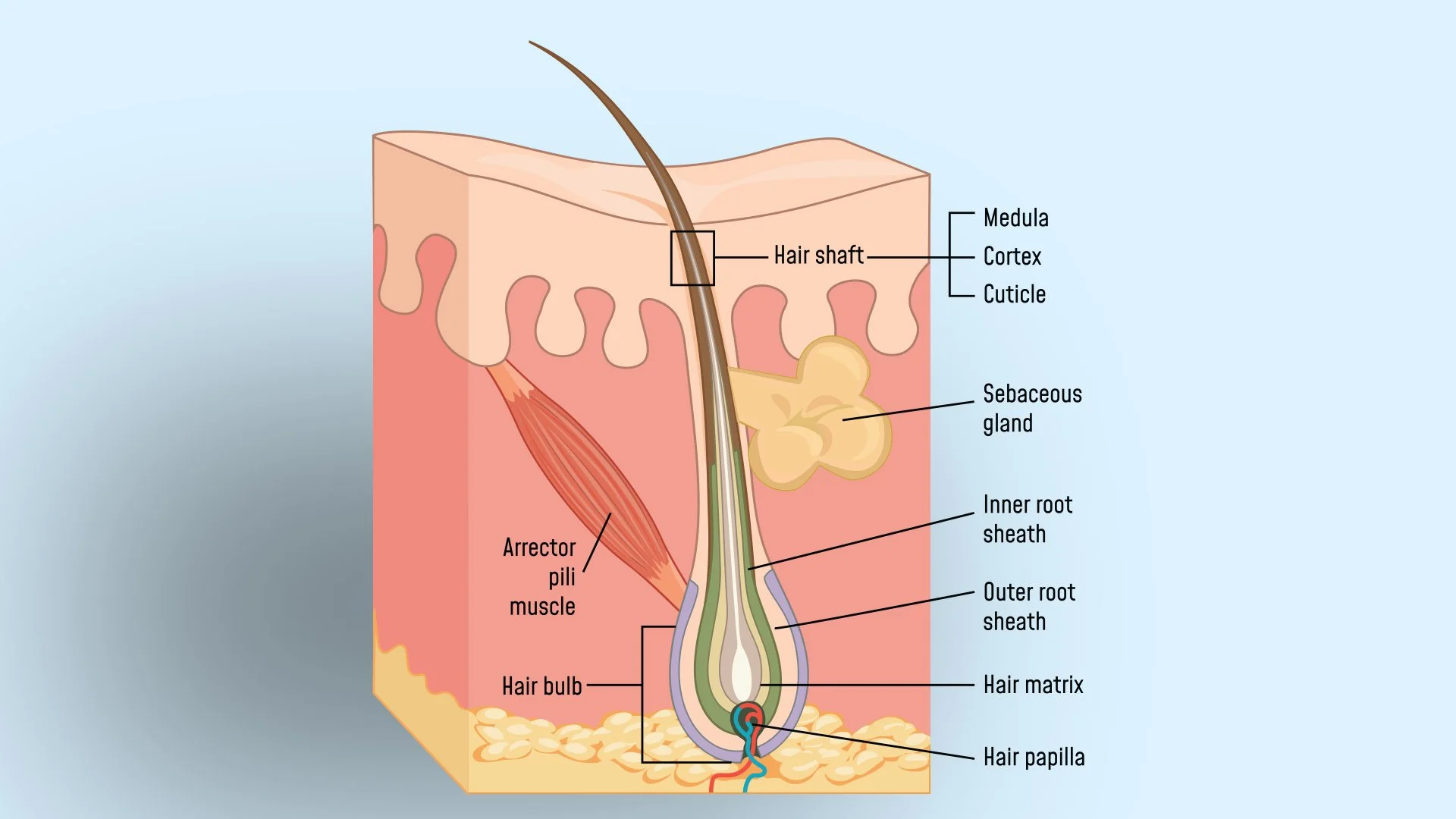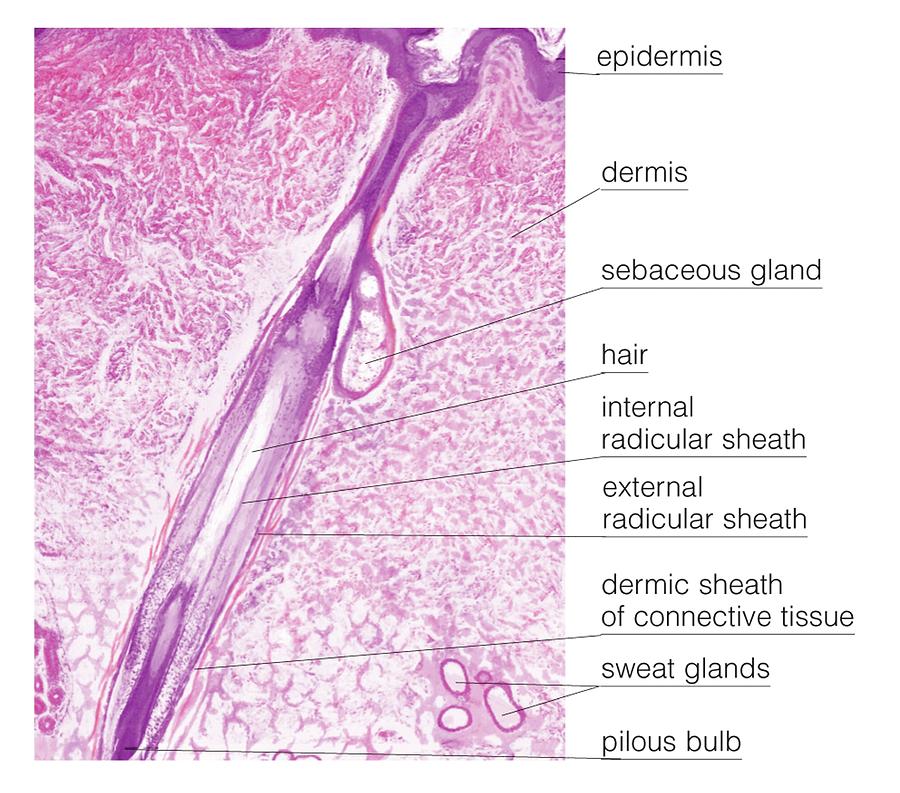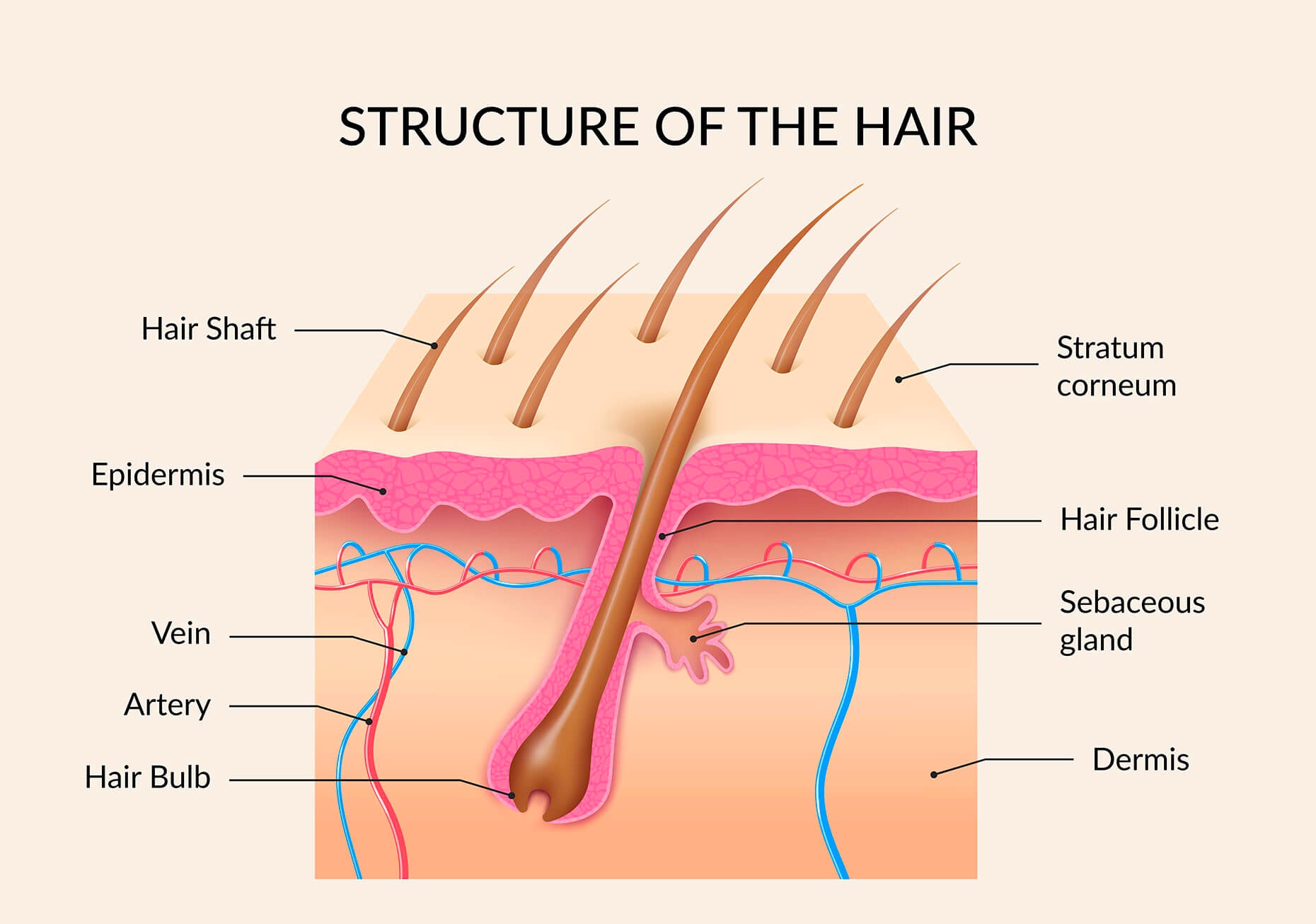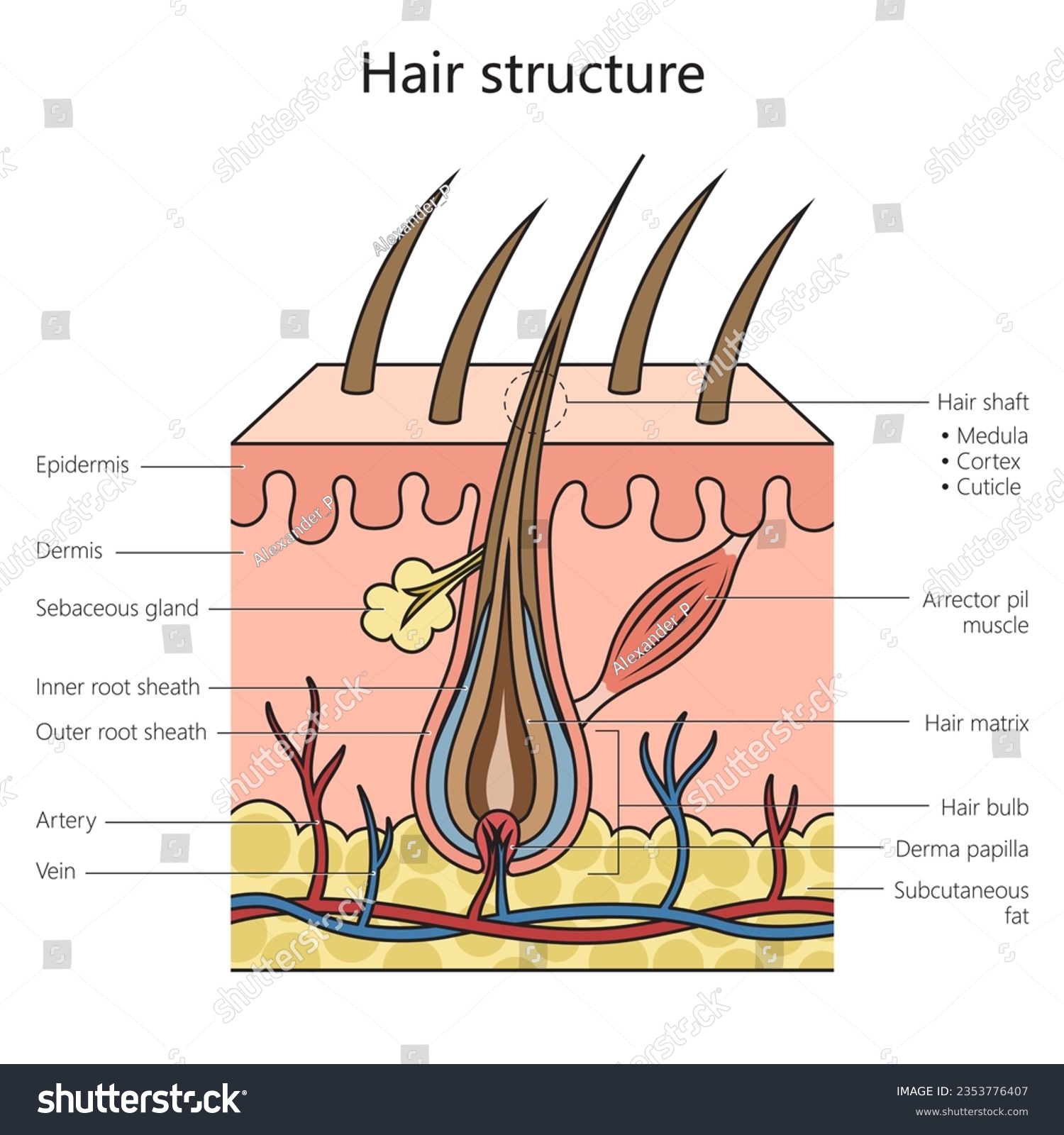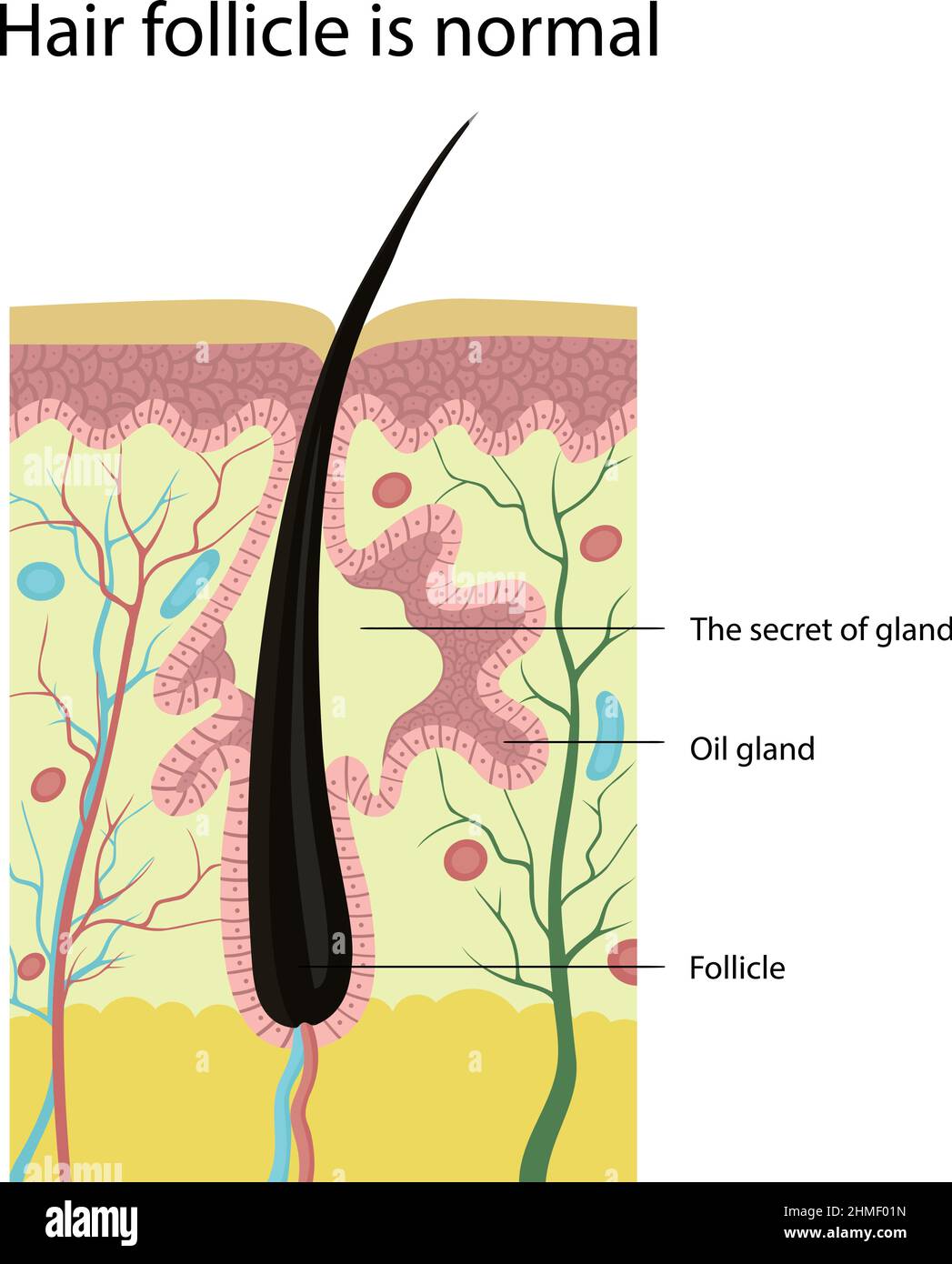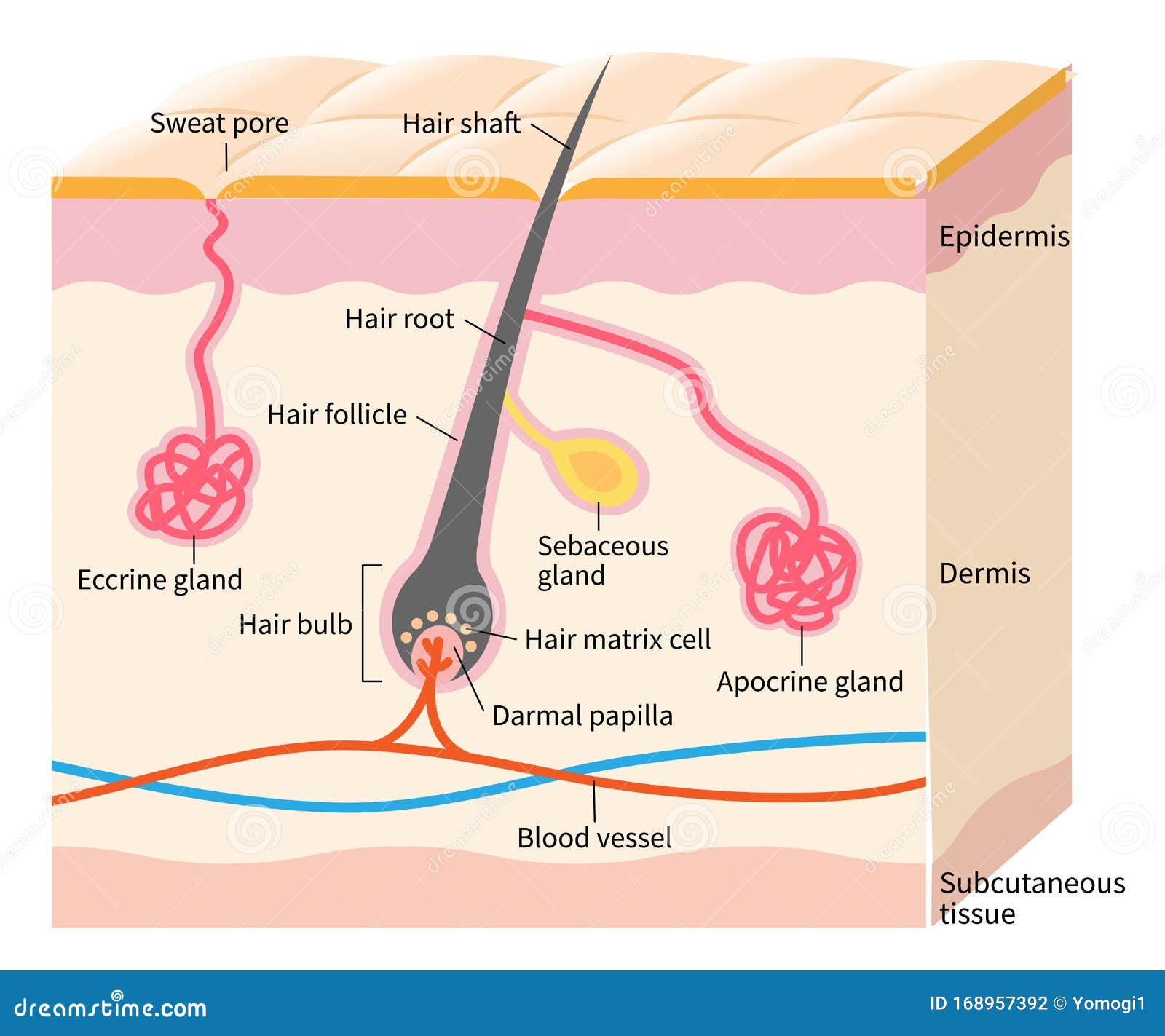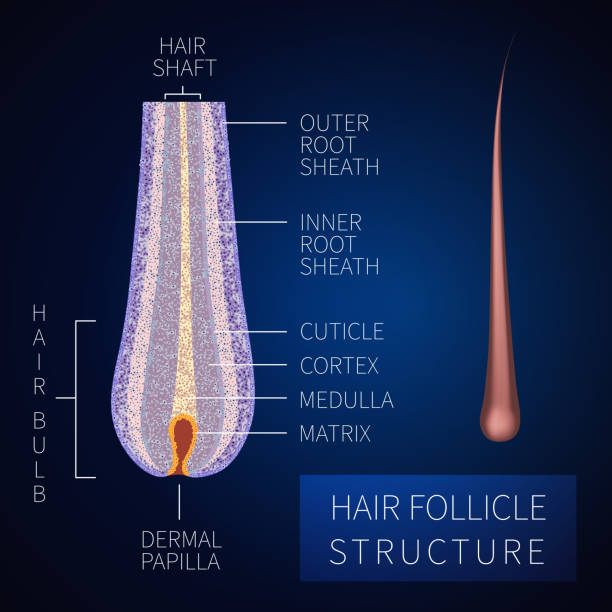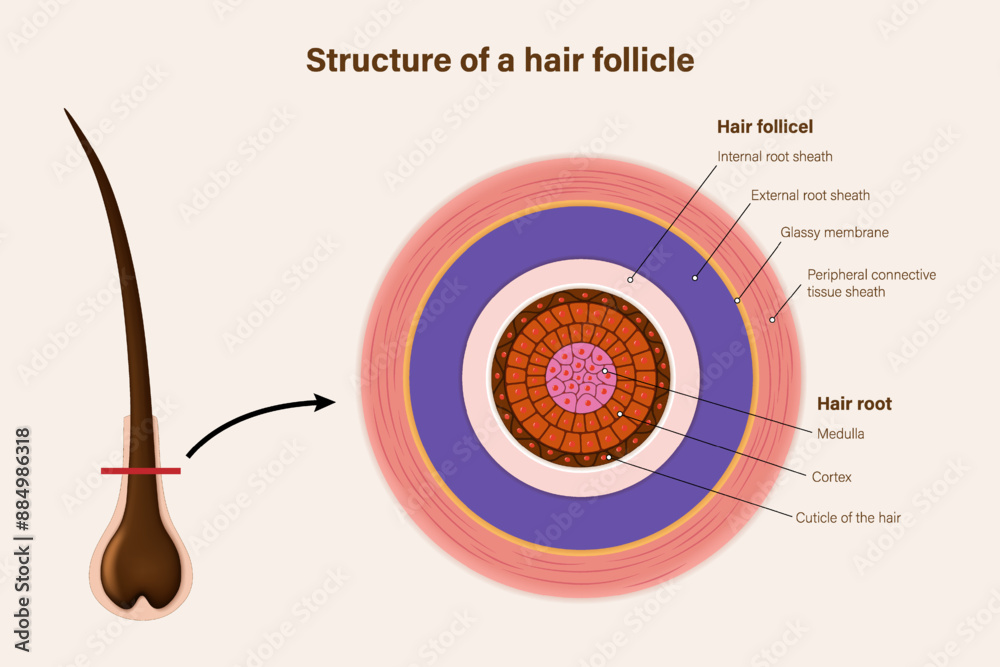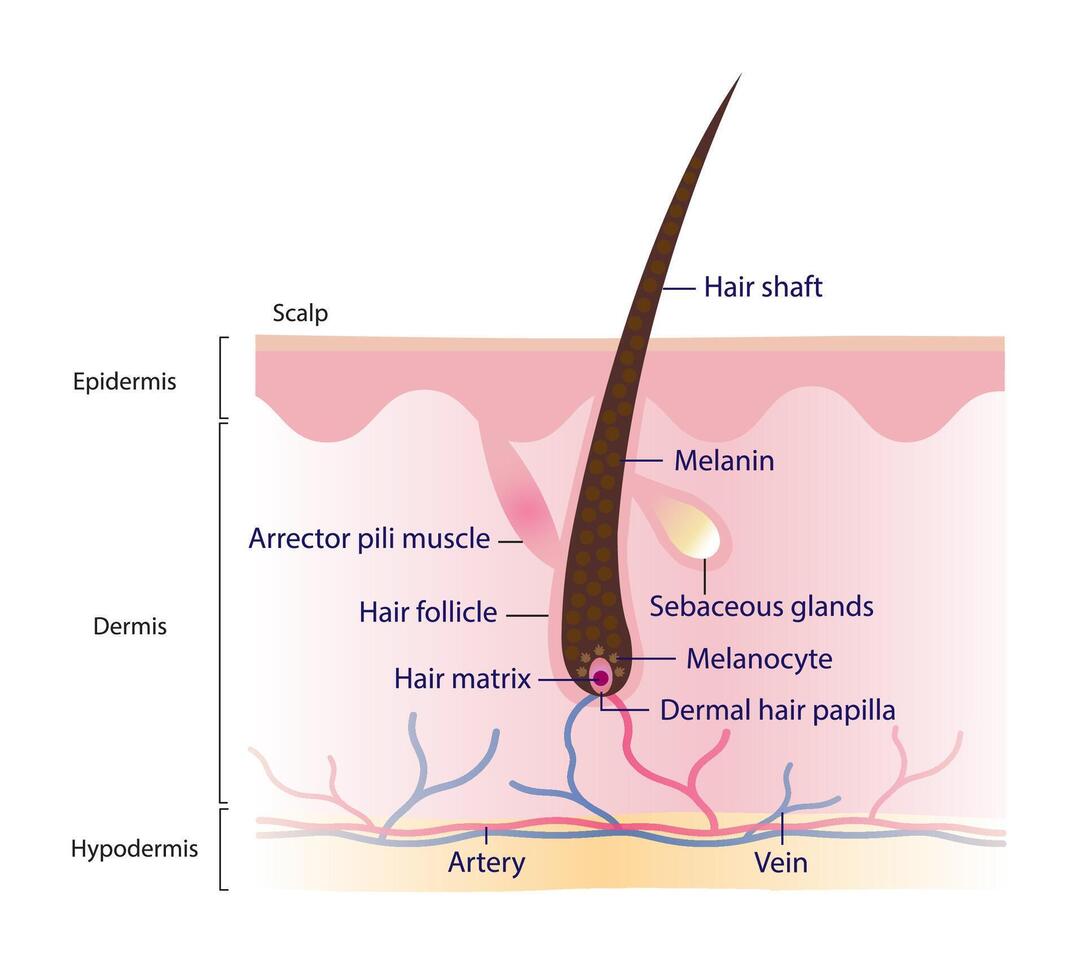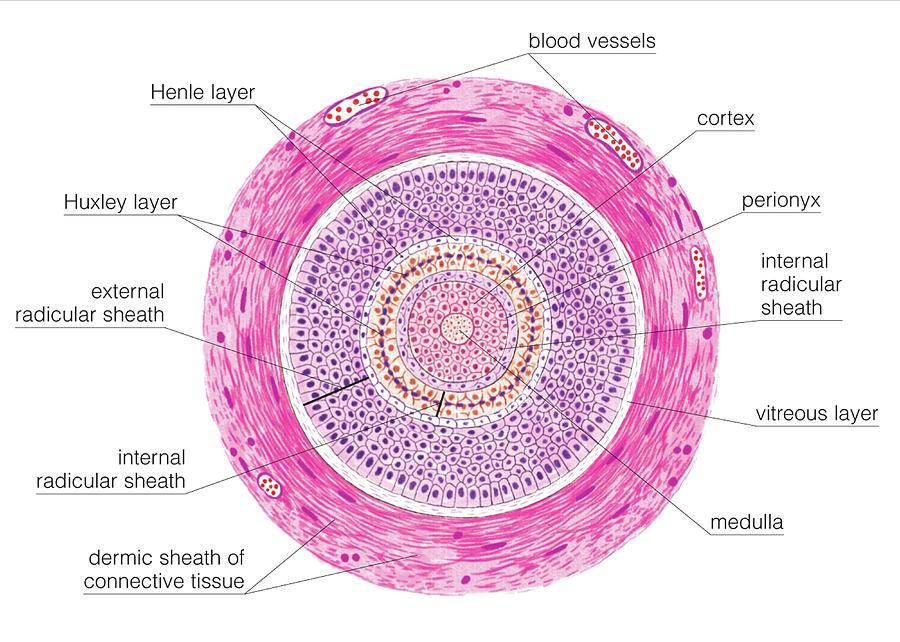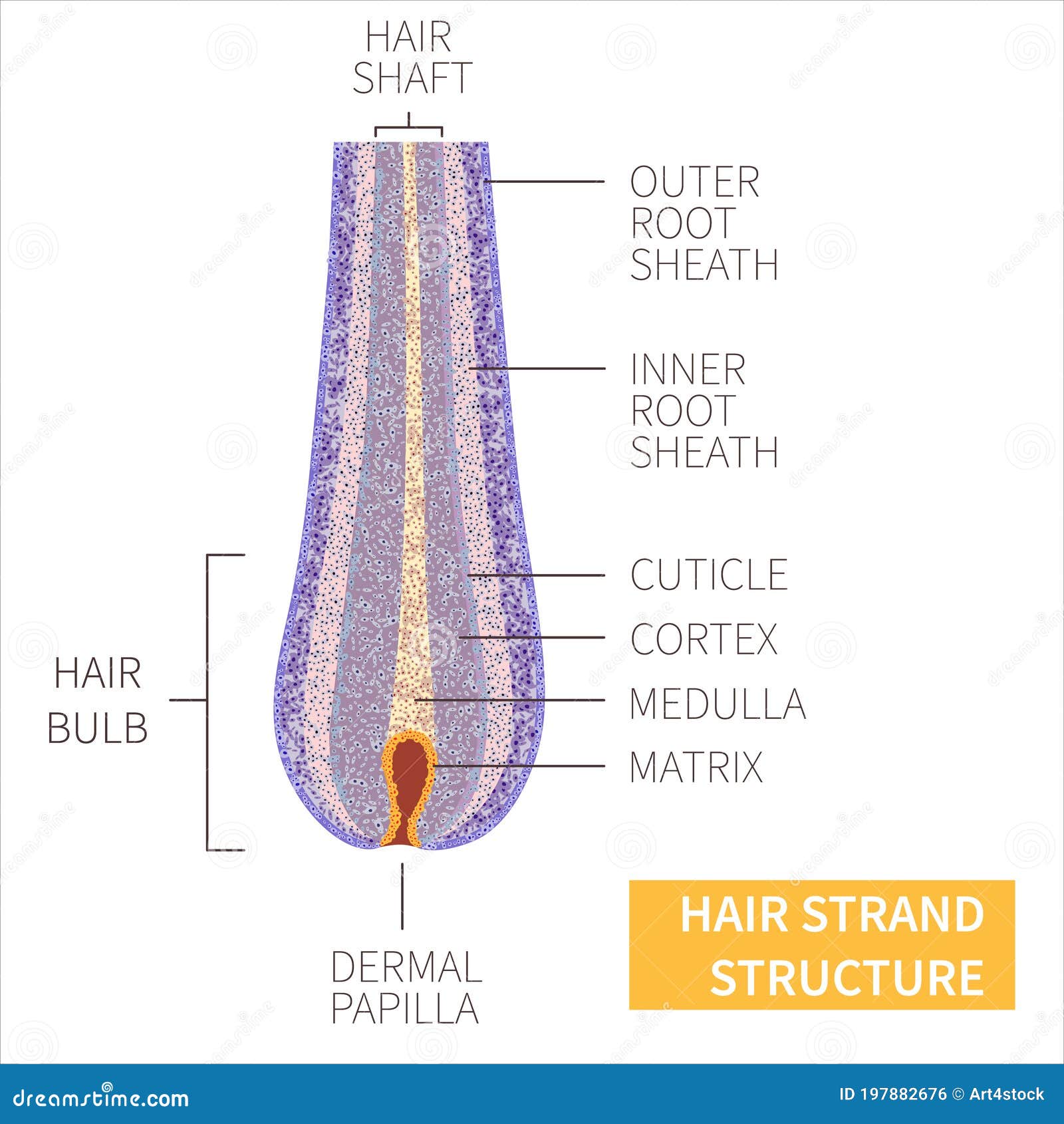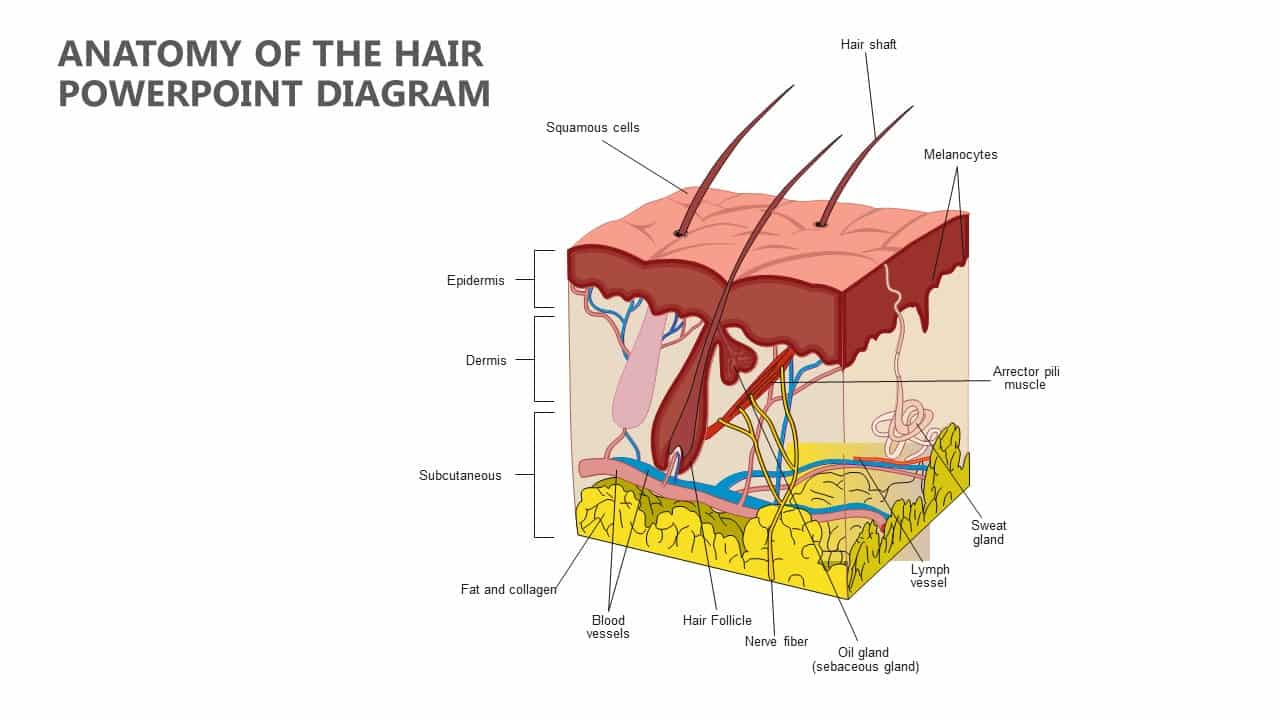Label The Structures Of The Hair Follicle
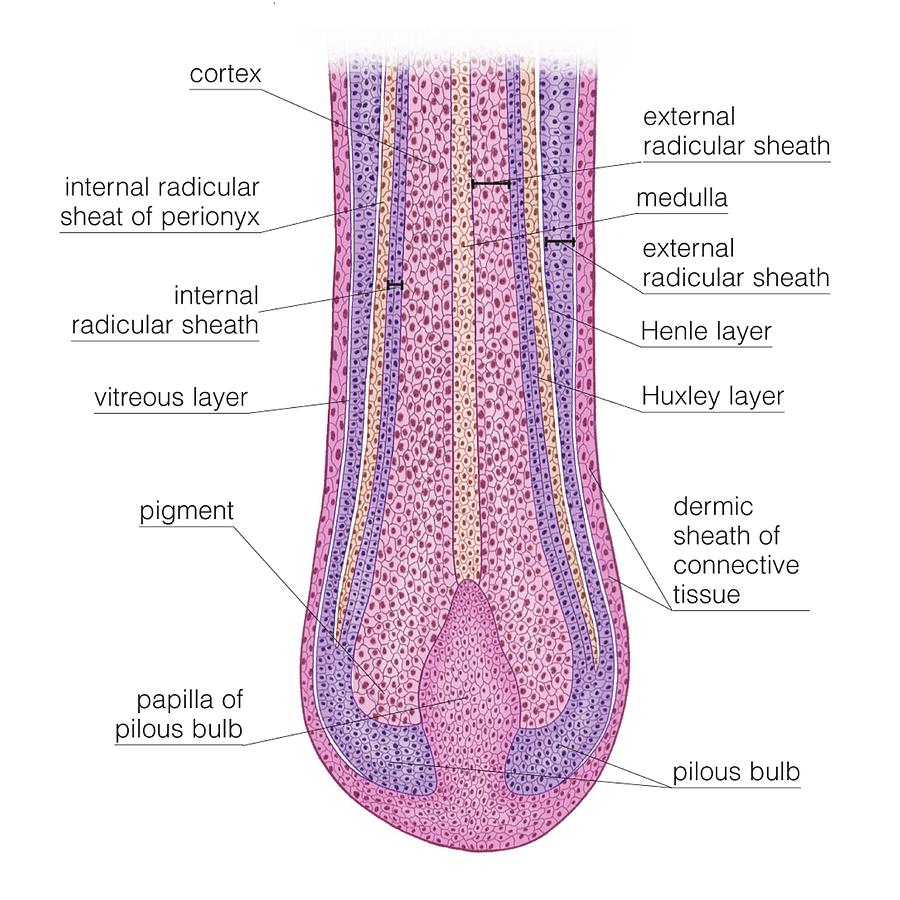
Imagine running your fingers through your hair, feeling its silkiness, its strength, its very essence. Each strand, a testament to a hidden world, a miniature marvel of biological engineering nestled beneath the surface of your skin. But have you ever paused to consider the intricate architecture responsible for this everyday miracle, the bustling hub of activity that is the hair follicle?
Understanding the hair follicle, its various parts, and their functions is crucial for appreciating not just the aesthetics of hair, but also its role in protecting our skin and regulating body temperature. This article will delve into the detailed anatomy of the hair follicle, exploring each component and its significance in the fascinating process of hair growth and health.
The Hair Follicle: A Deep Dive
The hair follicle, a complex skin organ, is a dynamic structure responsible for the production of hair. It's much more than just a simple tube; it's a sophisticated mini-factory, constantly working in cycles of growth, rest, and shedding.
The Anatomy Unveiled
Let's embark on a journey to dissect the hair follicle and identify its key components. Each part plays a vital role in the life cycle of a hair strand.
The Hair Bulb: At the base of the follicle lies the hair bulb, a bulbous structure that encloses the dermal papilla.
The Dermal Papilla: This small, cone-shaped area is a cluster of connective tissue containing capillaries, which supply nutrients and oxygen to the growing hair.
The dermal papilla is crucial, it sends signals that regulate hair growth. Think of it as the command center of the hair follicle.
The Hair Matrix: Surrounding the dermal papilla is the hair matrix, a layer of actively dividing cells that are responsible for creating the hair shaft.
These cells are the workhorses, constantly multiplying and differentiating to form the hair we see. Melanocytes within the matrix also determine hair color by producing melanin.
The Hair Shaft: This is the visible part of the hair, composed of keratin, a protein that gives hair its strength and structure.
The hair shaft is made up of three layers: the medulla (innermost layer), the cortex (middle layer), and the cuticle (outermost layer).
The Inner Root Sheath (IRS): This layer surrounds and supports the developing hair shaft within the follicle.
It helps to shape the hair and guide it upwards. It disintegrates before the hair shaft exits the skin.
The Outer Root Sheath (ORS): This is the outermost layer of the hair follicle, connecting it to the epidermis.
It acts as a protective barrier and also plays a role in anchoring the follicle to the surrounding tissue. The ORS extends all the way to the surface of the skin.
The Connective Tissue Sheath: This is the outermost layer of the follicle, composed of collagen fibers, providing support and structure.
The Sebaceous Gland: Situated near the top of the hair follicle, the sebaceous gland produces sebum, an oily substance that lubricates the hair and skin.
Sebum helps to keep the hair flexible and hydrated, preventing dryness and breakage. Overproduction of sebum can lead to oily hair and skin conditions.
The Arrector Pili Muscle: This small muscle attaches to the hair follicle and the epidermis.
When contracted, it causes the hair to stand on end, resulting in "goosebumps". This reflex is a remnant of our evolutionary past, where it helped to trap a layer of air for insulation.
The Hair Growth Cycle
Hair growth is not a continuous process. It occurs in cycles, each with distinct phases:
Anagen (Growth Phase): This is the active growth phase, lasting for several years.
During anagen, the cells in the hair matrix divide rapidly, producing new hair. The length of the anagen phase determines the maximum length of the hair.
Catagen (Transition Phase): This is a short transitional phase, lasting a few weeks.
During catagen, hair growth slows down, and the hair follicle shrinks. The dermal papilla begins to separate from the hair matrix.
Telogen (Resting Phase): This is the resting phase, lasting for several months.
During telogen, the hair follicle is dormant, and the hair remains in place. Eventually, a new hair will begin to grow, pushing the old hair out.
Exogen (Shedding Phase): Often considered part of the telogen phase, exogen is the active shedding of hair.
Old hairs are released from the follicle and fall out, making way for new hair growth. It's normal to shed some hair every day.
Factors Influencing Hair Follicle Health
Many factors can influence the health and function of the hair follicle, including genetics, nutrition, hormones, and stress.
Genetics: Genetic predispositions play a significant role in determining hair thickness, color, and the likelihood of hair loss.
Nutrition: A balanced diet rich in protein, vitamins, and minerals is essential for healthy hair growth.
Hormones: Hormonal imbalances can affect hair growth, leading to conditions such as androgenetic alopecia (pattern baldness).
Stress: Chronic stress can disrupt the hair growth cycle, leading to increased hair shedding.
Age: Hair growth tends to slow down with age, and hair may become thinner and more brittle.
The Significance of Understanding Hair Follicle Structure
Understanding the intricacies of the hair follicle has significant implications for the treatment of hair loss and other hair-related conditions.
Targeted Therapies: Knowledge of hair follicle biology allows for the development of targeted therapies that promote hair growth or prevent hair loss.
For example, Minoxidil, a common treatment for hair loss, works by stimulating the hair follicle and prolonging the anagen phase.
Improved Cosmetic Products: Understanding how different ingredients interact with the hair follicle can lead to the development of more effective and safer cosmetic products.
Early Detection of Diseases: Changes in hair growth patterns or hair follicle structure can sometimes be indicative of underlying medical conditions.
A dermatologist can examine hair follicle samples to diagnose various conditions and recommend appropriate treatment.
Looking Ahead
Research into hair follicle biology is ongoing, with scientists constantly uncovering new insights into the complex mechanisms that govern hair growth and health.
One promising area of research is hair follicle regeneration, which aims to stimulate the growth of new hair follicles in areas where hair has been lost.
Future advancements in hair follicle research hold the potential to revolutionize the treatment of hair loss and improve the overall health and well-being of individuals suffering from hair-related conditions.
The hair follicle, a tiny yet mighty structure, is a window into our overall health. By understanding its anatomy and function, we can better appreciate the miracle of hair and take steps to keep it healthy and strong.
